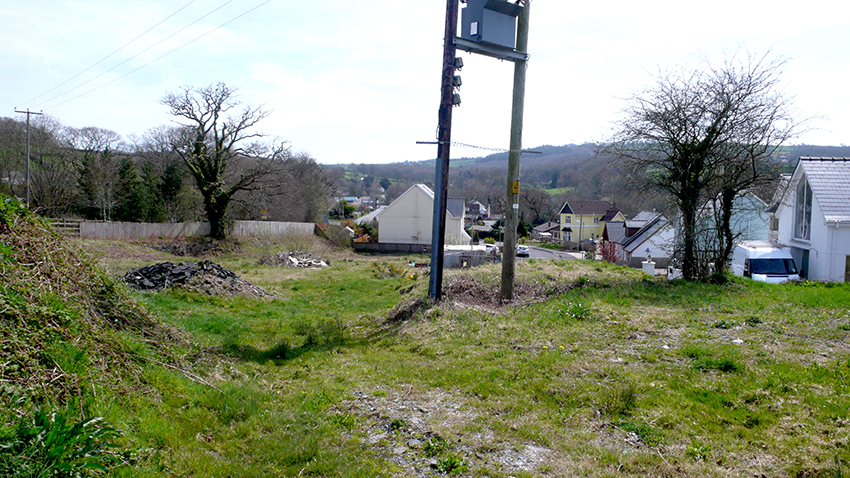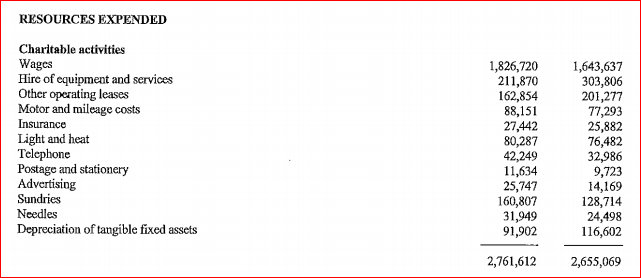After posting my previous piece on colonialism, and using as an example the thwarted biomass plans of Welsh businessman Clive Hughes, I received some very interesting feedback naming Hughes’ nemesis as Robin Andrew Cammish. ‘Who him?’ you demand. Well, make yourself comfortable and settle back for a quite remarkable story.

First of all, read this Llanelli Star report from October 2012 in which Cammish explains how he got involved in the campaign against Clive Hughes’ proposed biomass power station at Coedbach, and how he became chairman of the group opposing the plan. Note that in the second paragraph it says, ” . . . the 58-year-old, who leads global purchasing and supply chain consultancy QP group”. So naturally, I checked up on the QP Group, and found that it had liabilities in excess of assets to the tune of £100,000 when it was struck off in June 2009. Which means that at the time the Llanelli Star piece was written, the QP Group had been defunct for over three years.
Or perhaps the Star meant QP Group (France) Ltd (based in Aldershot!). Or QP ES Group SA of Luxembourg. How about QP Group Sas, with an address in central Paris. Or maybe it’s QP Group Gmbh in Germany. There are even QP companies in the USA and Australia! So take your pick. In fact, Cammish has been involved with over thirty companies, some of which I shall explore below. (Note that the address given for him by Company Check is in Birmingham.)

Maybe I’m being a little unfair to Cammish, it’s so easy to get confused when one has so many companies using the QP name (an abbreviation for quality and performance). Perhaps what he told the Star was that he ran Quality and Performance in Development Ltd (Co. No. 03391150), which seems to be the main vehicle for his business activities and currently enjoys a net worth of £944,053.
Though Quality and Performance in Development Ltd threw up another mystery. Cammish’s address is Llandyri House, between Kidwelly and Trimsaran, but the address given for his main company is Coomb Mansion, Llangynog, a truly ugly nineteenth-century ‘mansion’ that has served as an approved school and a Cheshire home for ex-servicemen. In addition to Robin Cammish the other directors of Quality and Performance in Development Ltd are his partner, Pauline Bowers, and a Craig Thomas Henry Warrington of Wokingham, in Berkshire.
Naturally, I got to wondering who owns Coomb Mansion, so here is the title document. Coomb Mansion was bought by Robin Cammish for £200,000, 06.11.2012. I wonder what plans he has for this grotesque pile? And will he get planning permission? Read on for the likely answer to the second of those questions. (You’ll note that Coomb Mansion is in Cammish’s name alone, whereas Llandyri House is in both his and Bowers’ names.)
Cammish and Warrington have collaborated elsewhere, with Summit House Close Estate Management Ltd, also in Berkshire, Co. No. 08959266, Incorporated 26.03.2014 and apparently sold on 09.10.2014. Incorporated on the same date and from the same address was Summit House Close Flat Management Ltd, Co. No. 08959172. Cammish and Warrington resigned 24.09.2014 when five new directors took over.
Though I find it strange that Warrington is named as a director for both companies but Cammish appears as QPB Ltd, Co. No. 06687464. Seeing as Warrington is a long-serving director of QPB, why is he listed separately; or should the question be, why isn’t Cammish listed under his name, rather than the company’s? QPB was Incorporated 02.09.2008 with a debt of £1.3m, presumably mortgages, paid off with the sale of the two Summit House companies.
We shall return to Robin Cammish’s many companies anon, but for the time being I want to explore how successfully this man has put himself about in his adopted community, how he has found favour with local power-brokers, and how favour and patronage has resulted in some remarkable appointments.
~~~~~~~~~~~~~~~~~~~~~~~~~
To recap . . . As the Llanelli Star told us, Cammish began to make himself known in Carmarthenshire when he got involved with the protest against Clive Hughes’ plan for a biomass plant in the Gwendraeth valley. Those protesting against this project called themselves the Coedbach Action Team.
Though there was also a company set up, Incorporated 01.08.2008, called Coedbach Action Team Ltd, Co. No. 06662006. The sole director until the company was struck off in December 2014 was Robin Cammish. This company never had any assets and existed only on paper . . . but for what purpose? Was it for legal reasons?
I strongly suggest that you scroll down in this judicial review document from September 2010 to paragraph 18, and paragraph 19, in which we read, “Mr Cammish says that the Claimant (Coedbach Action Team Ltd) does not have the resources to fund its own costs in this judicial review and to pay the costs of an opposing party if it is unsuccessful. That is at odds with a letter sent to the solicitors for the Interested Party (Developer) dated 21 July 2010 in which the Claimant’s solicitor asserted that it did have the funds to pay the costs of successful parties if the claim for judicial review failed.”
Which suggests to me that in order to secure the judicial review Cammish said he / the group had the money needed to meet any costs, but when push came to shove he / the group claimed to be skint. Draw your own conclusions.
In fact, I strongly suggest that you read the document to the end. Essentially, Cammish was told to piss off because a biomass plant at Avonmouth had nothing to do with, and would have no impact upon, a bunch of people living in Carmarthenshire. They seem to have escaped payment of costs due to having formed a private limited company, with Cammish as its sole director. But why were they fighting this project in Bristol anyway?

The biomass plant that made a star out of Cammish was planned for a location not far from Pembrey airport, and only a few miles from Ffos Las racetrack. Now keen watchers of Carmarthenshire County Council will be aware that this area is dear to the heart of Meryl Gravell, Mam to the Independent group on the council, former leader of the council, and right-hand woman to and mouthpiece for the man who runs Carmarthenshire, Mark James, the chief executive.
Which makes this the appropriate time to give some background information about this area and those entertaining grand ideas – who said ‘grandiose’? – for this part of Carmarthenshire.
UPDATE 15.12.2015: I have been directed to a film made for HTV in 2008 featuring both Clive Hughes and Robin Cammish.
Meryl Gravell – who does not appear – is quoted as saying that the area’s economic future lies with “leisure and tourism projects”, which as we know, will provide very few worthwhile jobs for locals, whereas Clive Hughes wants to create jobs for locals.
Cammish, who, it could be argued, has retired to the area, represents a type we find all over rural Wales nowadays. His rural idyll is more important than jobs for those who belong here.
It is alleged that during the filming of this programme Cammish claimed that Hughes owed £18m to his accountants. This was not broadcast.
~~~~~~~~~~~~~~~~~~~~~~~~~
Her affection for this area means that Meryl Gravell will tolerate nothing jeopardising her grand vision, be the threat a biomass power station, an opencast coal operation or a vast solar energy complex – against all of which Robin Cammish has taken up the cudgels in recent years. Only developments approved of by Meryl Gravell are welcomed, or allowed.
One such enhancement in the pipeline is Robbie Savage’s luxury hotel at Ffos Las, though earlier this year he had to apply for a planning extension, which makes many locals sceptical that it will ever be built. Then there are the executive homes in open country to further improve the Gwendraeth’s cachet. Though quite how either project will benefit locals is matter for conjecture.
 For Pembrey airport, there was – and may still be – a plan to turn it into some kind of international duty-free business hub. As it was worded on the airport website until quite recently, Pembrey was “one of the few Airports in the United Kingdom that has 5000 acres of adjoining land available for joint venture with very little planning and environmental constraint”. (Unkind souls might suggest that ‘very little planning and environmental constraint’ could apply to the whole county.)
For Pembrey airport, there was – and may still be – a plan to turn it into some kind of international duty-free business hub. As it was worded on the airport website until quite recently, Pembrey was “one of the few Airports in the United Kingdom that has 5000 acres of adjoining land available for joint venture with very little planning and environmental constraint”. (Unkind souls might suggest that ‘very little planning and environmental constraint’ could apply to the whole county.)
What’s certain is that by 2011 Cammish had his feet under the table with Meryl Gravell, literally, as this film shows (at 23 minutes in), where we see Cammish discussing with Meryl how Pembrey airport could be improved, and made more profitable. A carefully rehearsed bit of play-acting it may be, but it nevertheless tells us that Cammish was by this stage ‘in’ with those who dispense patronage, funding and planning consent thereabouts.
As was proven a few years later when on 06.09.2013 he was appointed a director of the Scarlets, one of the three vanity projects accepted by the Welsh Rugby Union as ‘regions’. Most people will know that the Scarlets are effectively bankrupt and largely kept afloat by Carmarthenshire County Council writing off debts and doing the Scarlets countless other favours. The most recent figure I can find gives the Scarlets a net worth of £-4,164,241.
Cammish’s appointment to the Scarlets’ Board is quite remarkable. For when we look at who has served as directors we see some great players of the past, Phil Bennett, Derek Quinnell and the late Ray Gravell, these supplemented by local worthies brought up at Stradey Park. By comparison, Cammish, the Englishman who has lived in the area for a few years, and may know nothing about rugby (certainly little about Llanelli), sticks out like a sore thumb. The only explanation is that he was appointed by the council . . . or rather, Meryl Gravell.
Cammish’s appointment to the Scarlets’ board may have been surprising, but what came next was almost unbelievable. Just a year after being imposed on the Scarlets by Meryl, he was appointed chairman of Regional Rugby Wales (RRW), since renamed Pro Rugby Wales, the body representing the Ospreys and the three vanity projects. An incredible promotion for an unknown after just one year at the Scarlets. What possible experience or understanding of Welsh rugby could he possess to qualify him for the RRW job?
UPDATE 23.12.2015: I’m hearing that Robin Cammish has today resigned as chairman of Pro Rugby Wales. Here is his e-mail of resignation.
Note that it was sent just a day after a meeting of Pro Rugby Wales at which it became clear he was being given the old heave-ho. Note in particular the reference to PRW wanting an “independent chairman”. So why wasn’t Cammish considered independent?
Whatever the answer to that, this is good news and it could mark the start of Cammish being exposed for the bullshitter he surely is. But it still leaves the concern that this man is dangerously close to the centre of power in Carmarthenshire. He must be removed.
Gentlemen,
As a follow up (sic) to the PRW Ltd board meeting on 22nd December 2015, I offer you my resignation as Chairman of Pro Rugby Wales Ltd, and I would propose to make that effective from 7 January 2016, which will enable to me complete some previously arranged meetings associated with the Welsh Rugby cost down and revenue up opportunity analysis.
I fully understand your desire to have an independent chairman of PRW Ltd , and during my short tenure as Chairman I have worked diligently and with complete integrity to ensure that I have acted objectively and impartially in all aspects of the PRW role when discharging my responsibilities and conducting myself on behalf of PRW and the Welsh regions.
It is ironic that having worked hard in the background to identify the collaborative opportunities across the 4 Welsh regions and the WRU, which if implemented, has the potential to deliver £+1million in cost down and revenue up in 2016-7, it is clear from our discussions on 22nd December that I do not have your full support as Chairman of PRW Ltd.
As I’m sure you will understand this position leaves me with no alternative but to offer you my resignation.
I am, and will remain, a very strong advocate and supporter of having 4 strong financially sustainable high performing Welsh regions, and as we discussed on the 22nd, previous management in the WRU created a set of relationships and behaviours which we described more associated with being at war. This is now changing to a much more collaborative environment, which has significant implications for the way that you lead and manage the regions affairs going forward.
Wishing you all the best for Christmas and the New Year
Regards
ROBIN CAMMISH
Chairman Cadeirydd
Pro Rugby Wales
~~~~~~~~~~~~~~~~~~~~~~~~~
What else has Cammish been up to since he first graced us with his presence? Well, for one thing, he joined forces with Julian Ruck, the Welsh-hater who was recently badly injured when hit by a car. They teamed up to run an e-literature festival in 2011 that flopped badly, some suggesting its failure was due to it being held at Ffos Las racecourse, rather than somewhere easier for visitors to reach by train and bus. But then, by 2011, Cammish was best buddies with Meryl Gravell, and Ffos Las is her baby, to be nourished with all manner of bookings. Or it could have been the combination of Ruck and Cammish that ensured local attendance was zero. Among those booked to perform at this disaster were the Three Welsh Tenors.
Read Ruck’s response to the Tenors when they asked to be paid. He came out with one anti-Welsh barb after another, ‘. . . bastions of Welsh language birdsong . . . my insistence on the reduction of Welsh language songs . . . Welsh hymns and nationalist rugby songs . . . one of them is a North Walian (sic) . . . go and sing for your money . . . rugby ditties . . . a tenner for each of you. A tenner for a tenor!’ What an odious little rucker he is, easy to understand why he’s banned from his local Spar store.
I wonder if Robin Cammish found this anti-Welsh diatribe funny, did they perhaps share a chortle or two? Whether he laughed or not, for a man trying to ingratiate himself with his new Welsh neighbours Cammish made a serious misjudgement by getting mixed up with the odious Jools. Though if you hurry you can buy some of his books through Amazon for . . . a penny! (Postage £2.80.) What am I saying! There’s no need to hurry at all, they’ll still be there in 2025.

When he’s not consorting with yet another Labour Welsh-hater Cammish gets himself into scrapes, either through indiscretion or else an overweening desire to promote himself. Here are a couple of examples of the latter.
The first comes from 2000 and an article entitled ‘Man on a Mission’, to be found on a site called Supply Management. It’s such a shameless puff that it could only have been written by Cammish himself. As he modestly puts it when talking of how his company has grown, “The site is the second that the consultancy has occupied. The first quickly became too small, not long after Cammish set up the company as a one-man band five years ago. He quickly found that he needed to take on more consultants and since then the firm has doubled in size every nine months or so. It now has offices in four other countries – the US, France, Germany and Australia – and employs more than 100 consultants. It’s long list of clients includes Viagra-producer Pfitzer, Cable and Wireless, Cathay Pacific, Caterpillar, BT, Carlsberg and Glaxo Wellcome.” He employs more than “100 consultants”!
I hate to sound pedantic, but the name of the massive pharmaceutical company is Pfizer, not Pfitzer as Cammish spells it. You think he’d know the name of the company that is one of his “doubling in size every nine months or so” empire’s major clients.
Here’s another OTT self-encomium from the QP Group UK website. This website is current because if you click on the History tab you’ll find, “In 2014, we partnered with Procurement Academy to provide a world-class blended learning Procurement offering to the market.” Very impressive, until you remember that the QP Group Ltd, of Llanydri House, Llanydri, Kidwelly, was struck off in June 2009 with a net worth of £-100,000. So why is the website still being updated as if QP Group UK was a going concern? Is this another example of the ‘confusion’ arising from having so many companies sharing the QP element in their names?
Read the two puffs together and just look at the companies he claims to have worked for or ‘advised’, they are some of the biggest companies in the world, which is no more than we should expect from Cammish. On the QP Group UK website go to Training > Overview and scroll down to the ‘Testimonials’. Do you believe those are genuine testimonials?
As for his indiscretions, these seem to be spawned by the same devil, Ego, that takes control when he attempts to write anything about himself. He has to exaggerate his own importance, his contacts, what he knows. After the famous dialogue with Meryl at Pembrey International it is rumoured that he was describing himself as an ‘advisor’ to the council, and Mark James had to put the record straight.
Then, before a London audience, he accused Clive Hughes of using bribery to promote his biomass project. What’s more, he claimed to have been told this by “the council”. Unfortunately all this was recorded, and while Cammish himself refused to say any more, Mark James, Carmarthenshire’s chief executive, was forced to issue a statement, part of which said, “I am perturbed to hear what Mr Cammish says. I am not aware that the council has made any such comments to Mr Cammish. As you are aware, Mr Cammish does not work for the council and I am therefore not in a position to control or question what he might say.”
I find it intriguing that Mark James says, “As you are aware, Mr Cammish does not work for the council”. ‘As you are aware!’ Does this refer to the previous such statement I suggested above? Even though Robin Cammish may not have been on the county payroll, there’s no question that he was close to Meryl Gravell and, according to one well-connected source, “had the run of County Hall”.
Ironically, it was Cammish who took legal action against Hughes, alleging that the Welsh businessman had suggested Cammish’s business record was less than spotless. (Surely not!) Cammish won, but I’m told Clive Hughes is refusing to pay.
Another avenue explored, perhaps with the encouragement of La Gravell, was the Kidwelly Heritage Trust, Charity Number 1153260, formed by Robin Cammish 15.08.2011. When I read what this lot planned to do – take over the Town Hall (owned by the County Council) and turn it into ‘community space’ – it was like deja vu all over again. This piece from the Llanelli Star (August, 2013) shows the Trust members standing a respectful distance behind Cammish while in the blurb the man himself mentions what has been done in Llandovery as one of his inspirations.
What happened in Llandovery was that a bunch of English drifters saw the chance to pull in hundreds of thousands of pounds of public money (including salaries and pensions for themselves) to create ‘community space’ not for locals but for them and their friends to hang out drinking Fair Trade coffee, swapping tales of Kathmandu while listening to Joni Mitchell and planning the next organic Morris dancing festival. Scams like this are happening all over Wales. I wrote about the Llandovery racket in The Impoverishment of Wales 26.08.2014 (scroll down to ‘YMCA Wales’), and more fully in Ancestral Turf 02.09.2014.
I’m reasonably certain that this was the path Cammish intended to follow – he was certainly looking for funding – but then came the call from Parc y Scarlets, soon followed by promotion to Regional Rugby Wales. Cammish jacked in the Kidwelly Heritage Trust Ltd in April 2015. The company, No 07741052, struggles along with just two directors and £40 in the bank.
~~~~~~~~~~~~~~~~~~~~~~~~~
Let us return now to Robin Cammish the businessman. As I said earlier, he has been involved with over thirty companies. Most of these have been liquidated, struck off, dissolved, often with big debts. None more so than the company I mentioned earlier, the one referred to in the screen capture, Hacer Consulting Ltd.
In my years of blogging – and indeed in the years before I started blogging – I have made many enquiries into assorted individuals’ business dealings, some of these individuals have been absolute rogues, but never have I come across a company like Hacer, that started life in 2003 with a net worth of £-762,000, then rose to the giddy heights of a net worth of £6,521,00 in 2005, before plunging to a net worth of £-18,651.00 in 2006. Hacer was struck-off in June 2009 with a net worth of £-18,643,595. (See panel below, click to enlarge.)

As you might expect, I paid for and downloaded the accounts for Hacer, and for the period when the company’s fortunes deteriorated by £25m, leaving the company valued at £-18.6m. You’ll find the accounts here. It seems to have been a company with no assets, a company that just shuffled shares around. I would appreciate feedback. An incomplete list of the companies he has been involved with can be found here. Check them out for yourself.
The only companies listed with Company Check as active are: Earls Removals Ltd, Pro Rugby Wales Ltd, QPB Ltd and Quality and Performance in Development Ltd. Of these, the only company that is his, and worth anything, is Quality and Performance in Development Ltd. Here are the abbreviated and unaudited accounts up to September 2014. They tell us that the ‘assets’ of Cammish’s sole viable company are made up of debts. In other words, debts that were either bought or inherited and will probably never be paid. But in the crazy world of UK business these count as ‘assets’ and can be used to misrepresent the financial health of a company
UPDATE 04.12.2015: QPB Ltd is being wound up. “First notification of strike-off action in London Gazette (Section 652)” on 12.11.2015. Which leaves Cammish with just two companies. The removals firm in Brum and Quality and Performance in Development Ltd, a company whose ‘assets’ are made up of debts unlikely to ever be paid.
Other than that, what have we learnt about Robert Cammish? I could be generous and dismiss him as a bullshitter, because he certainly is a bullshitter, but there might be more to him than that.
I don’t entirely agree with Clive Hughes that Cammish having so many failed companies to his (and his partner, Pauline Bowers’) name is in itself damning, but this pattern might suggest a ‘business’ that most people would find unpalatable.
The value of Cammish’s companies seem to consist largely of share issues and debts; nothing is produced and there is little to show in the way of assets. He advertises himself as someone who ‘advises’ other companies, he even lists blue chip multinationals like Cathay Pacific, SmithKline Beecham, you can believe that or not, but what does he really do?
When I asked someone more au fait with such matters to look into Cammish’s affairs his description of Cammish’s activities involved the use of a large, scavenging bird. Alternatively, a woman paid to disrobe in public.
~~~~~~~~~~~~~~~~~~~~~~~~~
Whatever the truth of that suggestion, I am perhaps more concerned with Cammish’s relationship with Carmarthenshire County Council. I think we have established that he came to the attention of then council leader Meryl Gravell through his opposition to Clive Hughes’ biomass project for Coedbach. Cammish then further endeared himself to Meryl by opposing other unwanted developments. Was there a quid pro quo?
What did Cammish get in return for acting as Meryl’s rottweiler when she pointed him at anything threatening to sully her vision for the Gwendraeth? I think we can assume that the appointment to the board of the Scarlets was one ‘biscuit’. Maybe Meryl even believed Cammish’s bullshit and thought he might be able to staunch the flow of money out the gates of Parc y Scarlets.
Then there’s Coomb Mansion. No sane person would have bought that Hammer House of Horror, and taken on the expense of maintenance and upkeep, without clear promises of planning permission, clearance for change of use, and who knows what else. It will be interesting to see what Cammish does with Coomb Mansion.
Then there’s the film I linked to, that excruciatingly staged ‘discussion’ between Meryl and Cammish at Pembrey International Airport. Cammish was claiming at that time to be an ‘advisor’ to the council, he is said to have “had the run of County Hall”, he was recorded in London saying that he had been told by the council that Clive Hughes was bribing people in order to facilitate his biomass project.
All this tells me that Carmarthenshire County Council, or certainly, Meryl Gravell, fell for Cammish’s shameless self-promotion and the fanciful stories of his glittering business record. Given that she is the chief executive’s representative on earth how much confidential council business has she involved Cammish in? How many council decisions has Cammish influenced? What is his relationship today with the Council?
And yet, there is something so quintessentially Carmarthenshire about this story. A smooth-talking stranger turns up, no one knows anything about him – so they accept what he tells them about himself! – and before you know it he’s got the key to County Hall, and those running the council are hanging on his every word! Sod background checks! Ignore probity! Bugger democracy!
There must come a point when even the size of Mark James’ redundancy package is no longer a deterrent to the ‘Welsh’ Government taking Carmarthenshire County Council into special measures. God knows they’ve done it with less cause in other areas.






























































